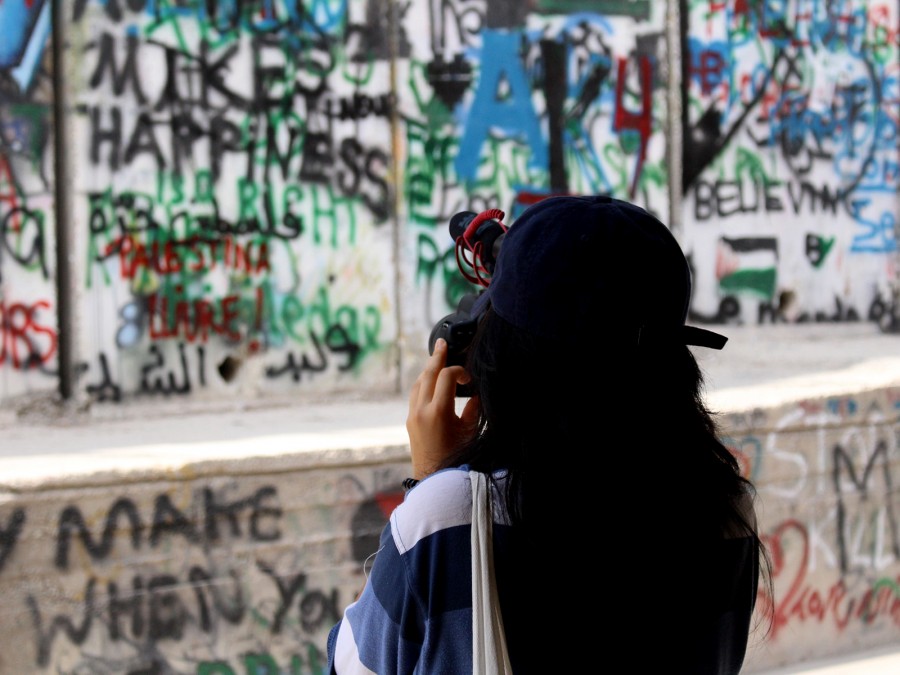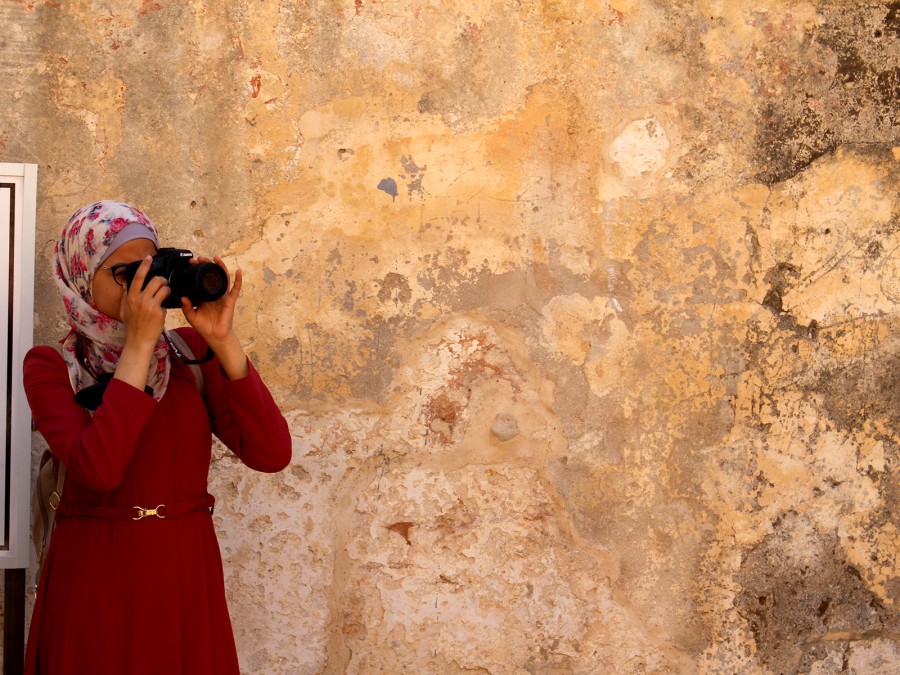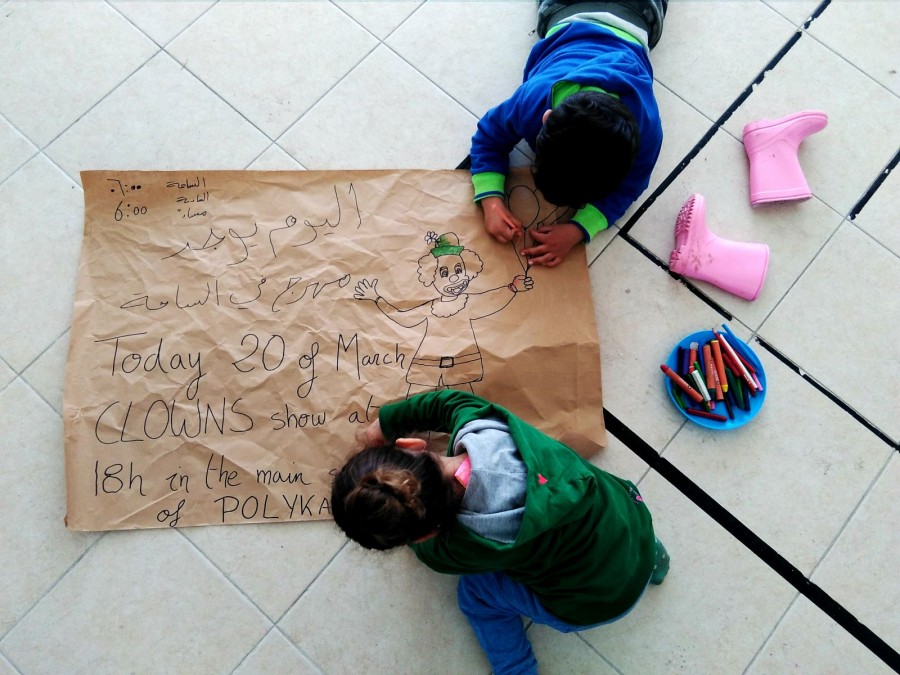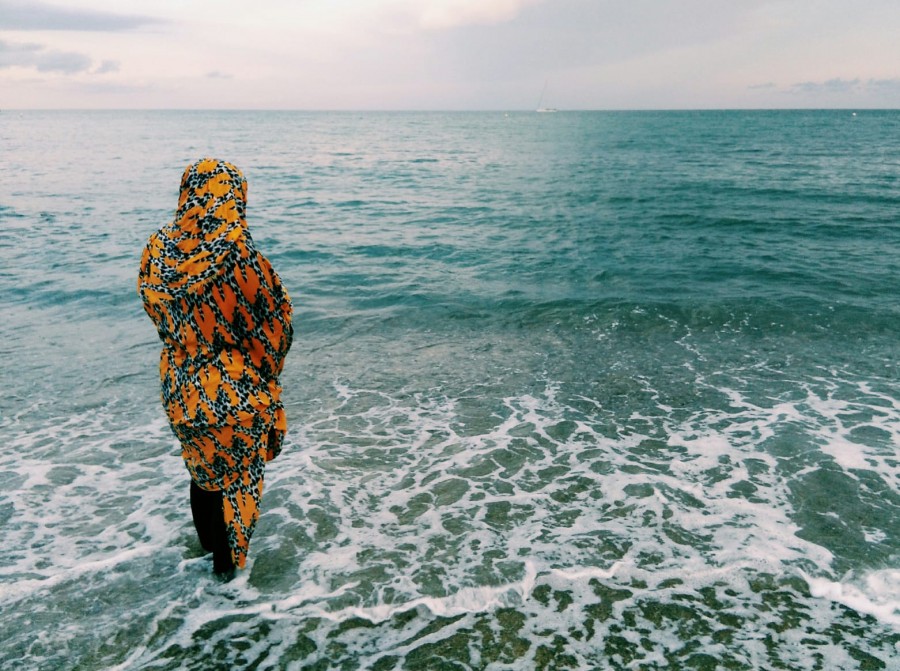Responsible photography: respecting and transforming
The following text was developed by social activist Marianna Espinos (Barcelona), who is specialized in Audiovisual and Multimedia. The topics of her expertise are Peace Culture, Non-formal education and Conflict as well as social movements communication. She wrote this post using her personal experience, some relevant content that she got from different observations, speeches, and literature. Photography is very subjective and every context has to be handled in a different way. That's why the approach, presented in this article, is opened for discussions and can be modified and complemented.

Facing Bethlehem wall (August, 2017)
Photography explains stories, shows realities and can be a visual alternative to words. But the most important: photography is also a language –it communicates, expresses and displays situations- that builds people’s imaginary. For that reason, and in order to use photography as a peace building tool, is important to take into account several aspects.
1. Respect: dignity is our priority.
Before pressing the camera button, ask yourself “Would I like to be represented like these?”. Moreover, ask about permission of any person who is being photographed.
2. Be responsible and consider the context.
Any image has consequences, for example, reinforcing stereotypes. Sometimes images from global south show colonialism ideas, such as “civilized” and “uncivilized” or “passive community” being help by an “active-occidental-volunteer”. Break with it. Show the complexities of the situation and backgrounds.
3. Transform: think in solutions and not in victimizing a situation or a group of people.
It is important to take photos not only for showing discrimination, injustices and human rights violations, but also to show good practices, look for possible solutions and inspire.
It is essential to ask ourselves about the reasons of taking any picture and what kind of information we are going to give. Using the 5W from journalism -Who, What, When, Where and Why- can be a useful tool in this way.
4. Take into account gender perspective. For example, very often women as a social group are presented only like mothers, someone who implement activities, related to caring. Sometimes this collective is showed under victimization and vulnerability. Try to avoid it and reinforce women role. Women have powerful roles in our society and this fact should be highlighted.

Documenting Sebastya by a journalism student from An-Najah National University (Palestinian territories, August, 2017)
5. Be careful when photographing children. This should be taken very seriously. Parental permission is a MUST. Don’t victimize them and don’t us their faces to make sensationalism.

Clowns are Welcome (March, 2018)
6. Awake people curiosity by exposing common goals inside the diversity. Avoid showing “otherness” and presenting the some communites as exotic.

Mediterranean common horizons (Saharawi women in La Barceloneta beach, Barcelona, August, 2018)

8. Think about the root of a problem that you want to show and be critic. Every social problem is caused by complex of circumstances and decisions. Try to present them.

To sum up, it's important to remember that you are not a hero with a camera in your hand. However, this tool have a lot of power. Be an active subject that observes and learns from reality. Respect differences, be patience and treat people as equals. These attitudes will help you to take pictures that can attract attention to the problems and also to propose possible solutions in order to improve our world.
Suggestions to keep learning about responsible photography
- The danger of a single story, Chimamanda Ngozi Adichie (book or TED speech)
- Network of journalists and communicators for development.
- Picturing the Global South: The Power Behind Good Intentions (V2).
- Storytelling guidelines
- http://fotomovimiento.org
- "Ask yourself if you are able to go inside a refugee camp without a camera" (Article in Spanish)

